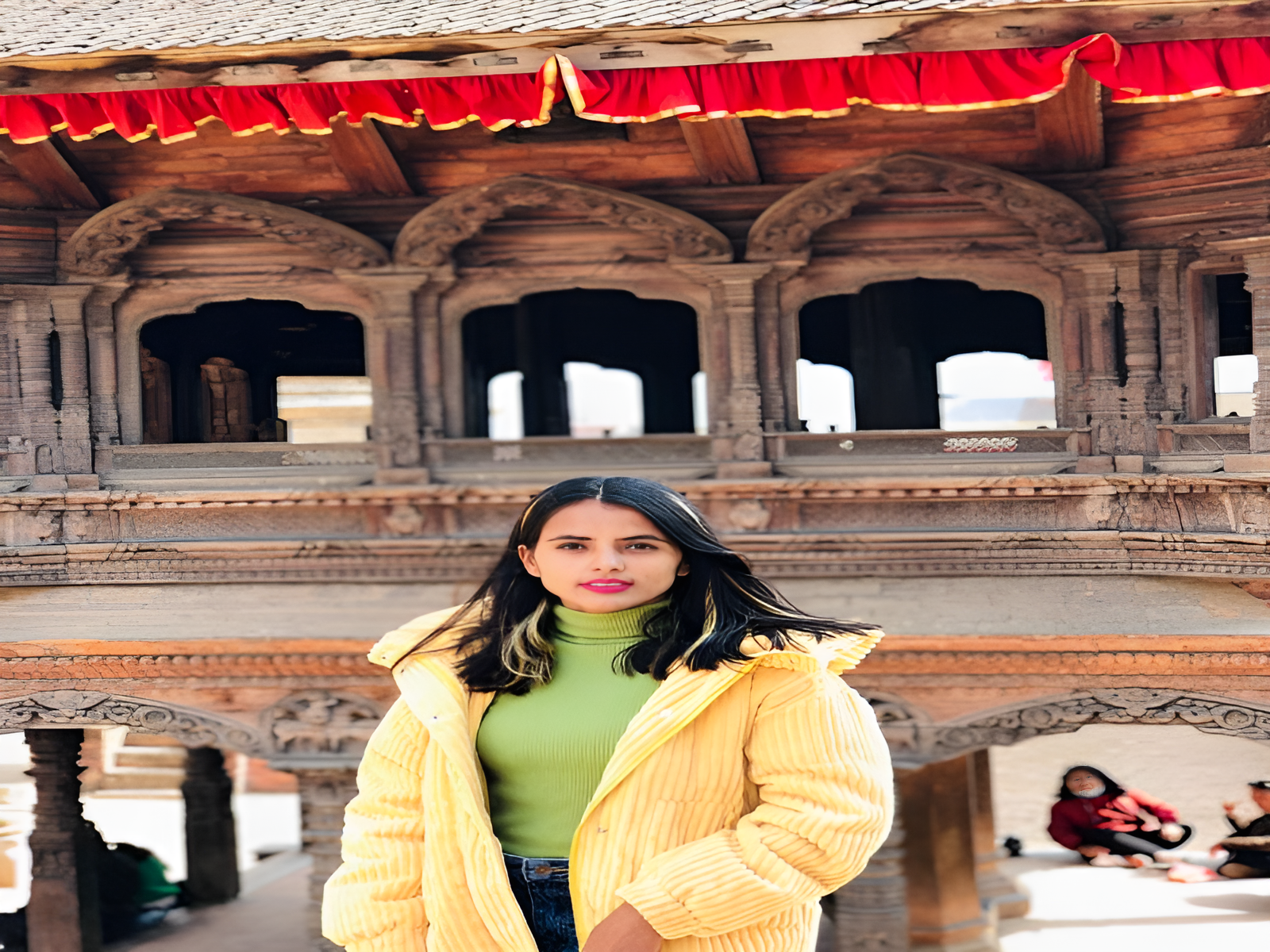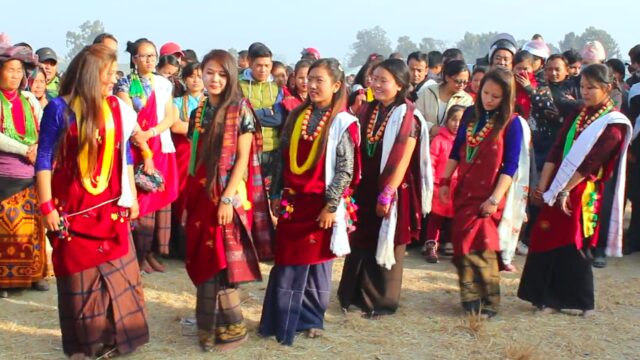Tihar, also known as Deepawali, is one of Nepal’s most vibrant and widely celebrated festivals. This five-day festival, also called Yamapanchak, is dedicated to honoring animals, deities, and familial bonds, filling each day with unique rituals, joyous gatherings, and cultural significance. Tihar typically falls in the autumn month of Kartik (October or November) and is celebrated with colorful decorations, traditional songs, and rituals that emphasize both reverence for nature and the importance of family and prosperity. Here’s a closer look at the fascinating traditions of each day of Tihar in Nepal:
Day 1: Kag Tihar (Crow Day)
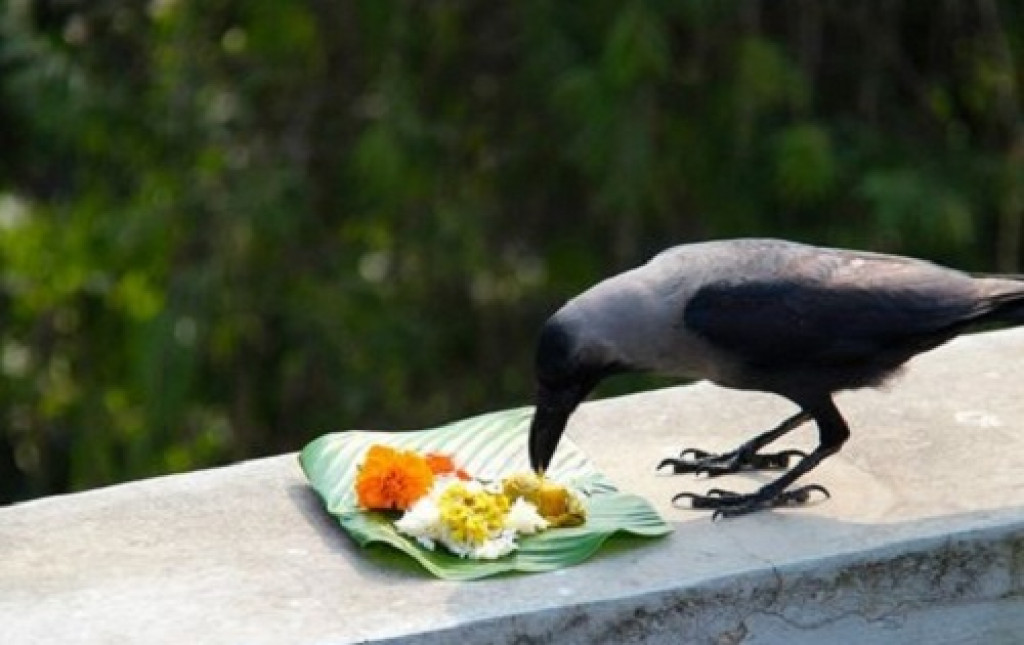
The festival begins with Kag Tihar, a day dedicated to crows, which are often seen as messengers of Yama, the god of death. To honor these birds and avert misfortune, people place offerings of food on rooftops and open spaces. This gesture is meant to appease the crows and is symbolic of warding off grief and sorrow. On this day, early morning food offerings include rice, grains, and other treats, reflecting the Nepalese respect for all living creatures and the balance between humans and nature.
Day 2: Kukur Tihar (Dog Day)
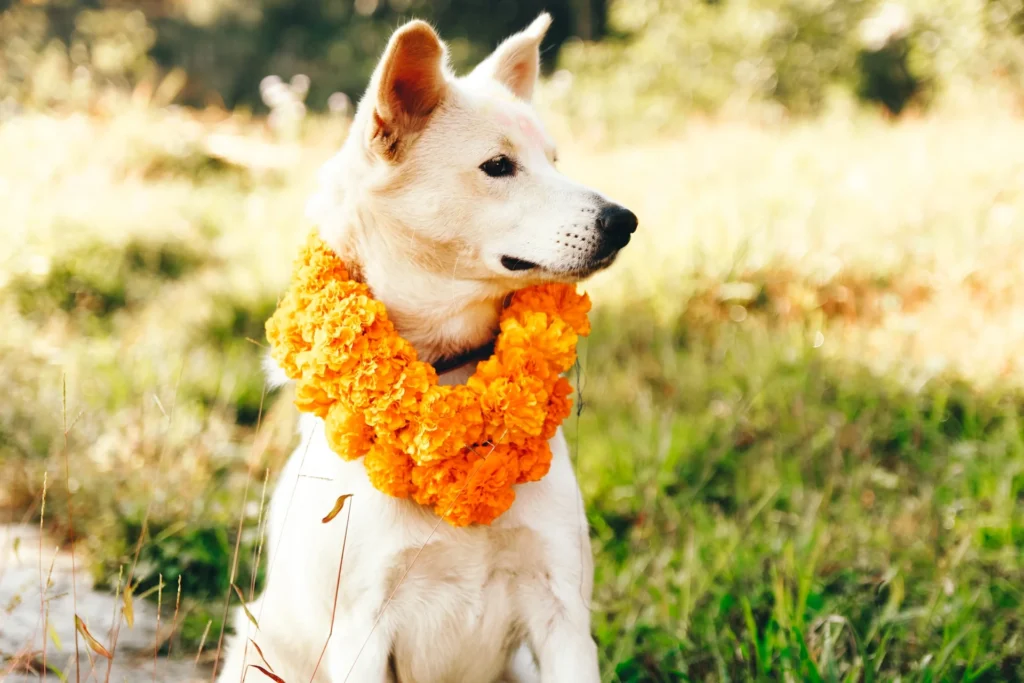
Kukur Tihar, the second day of the festival, is devoted to dogs, which are considered faithful companions and protectors. Dogs, often associated with Bhairava, an avatar of Lord Shiva, and the god of death, Yama, are honored by placing flower garlands around their necks and marking them with a red tika on their foreheads. Families offer dogs special food treats, from bread and milk to cooked rice and meat, as a sign of gratitude for their loyalty and service. In Nepal, even stray dogs are included in the celebration, demonstrating the Nepalese people’s deep appreciation for animals.
Day 3: Gai Tihar and Laxmi Puja (Cow Day and Worship of Goddess Laxmi)
The third day of Tihar is among the most important and is dedicated to the worship of cows in the morning and Goddess Laxmi in the evening.
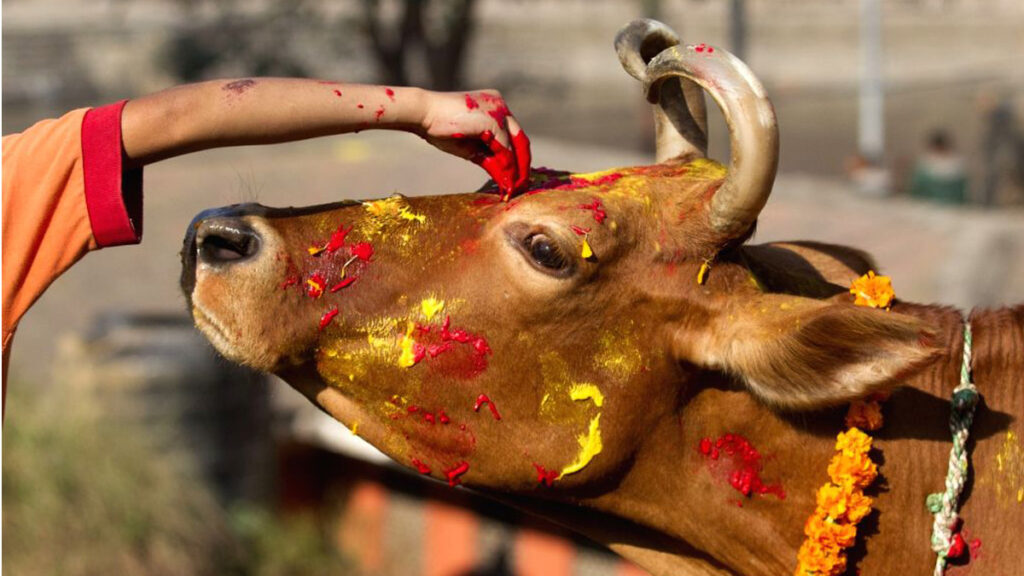
Gai Tihar (Cow Worship)
The cow, revered as a symbol of wealth, peace, and nourishment, holds a sacred place in Nepalese culture. On Gai Tihar, families place garlands and red tika on cows, offering them delicious treats as they roam freely through the streets. This act of reverence celebrates the cow’s generosity and its significance in Hindu tradition, symbolizing the spirit of motherly compassion.
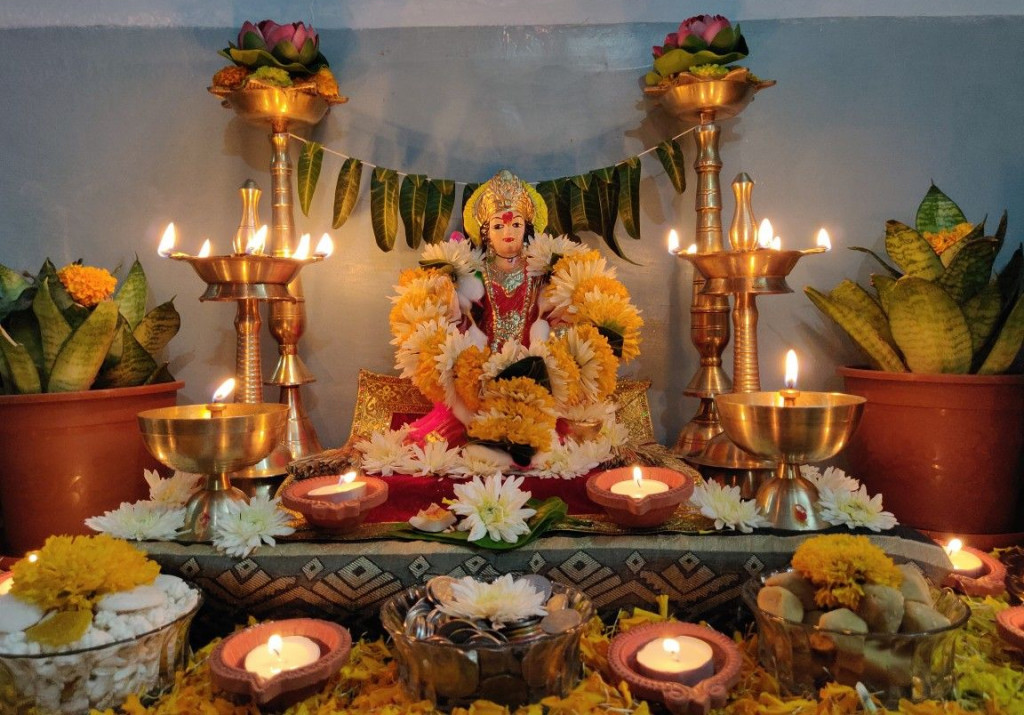
Laxmi Puja (Worship of Goddess Laxmi)
In the evening, households shift their focus to Laxmi Puja, the worship of Laxmi, the goddess of wealth and prosperity. Homes are meticulously cleaned and adorned with lights, oil lamps, and decorations to invite the goddess, as it is believed that Laxmi visits clean, bright homes. People place rangoli (colorful art designs) and footprint symbols from their doorsteps to the altar as an invitation for Laxmi to bless their homes with prosperity.
The night of Laxmi Puja is also known as Sukha Ratri, or “night of happiness,” as people gather with family members to celebrate and offer prayers. The evening also sees groups of young girls performing bhailo, traditional songs, and dances, in neighborhoods. In return, homeowners gift them sel roti (a rice-based delicacy), grains, sweets, and small tokens of appreciation, symbolizing blessings for both the performers and the household.
Day 4: Govardhan Puja and Mha Puja (Ox Worship and Self-Worship)
The fourth day of Tihar varies among different ethnic groups and regions of Nepal, and it includes a variety of rituals, including Govardhan Puja, Mha Puja, and New Year celebrations for the Newar community.
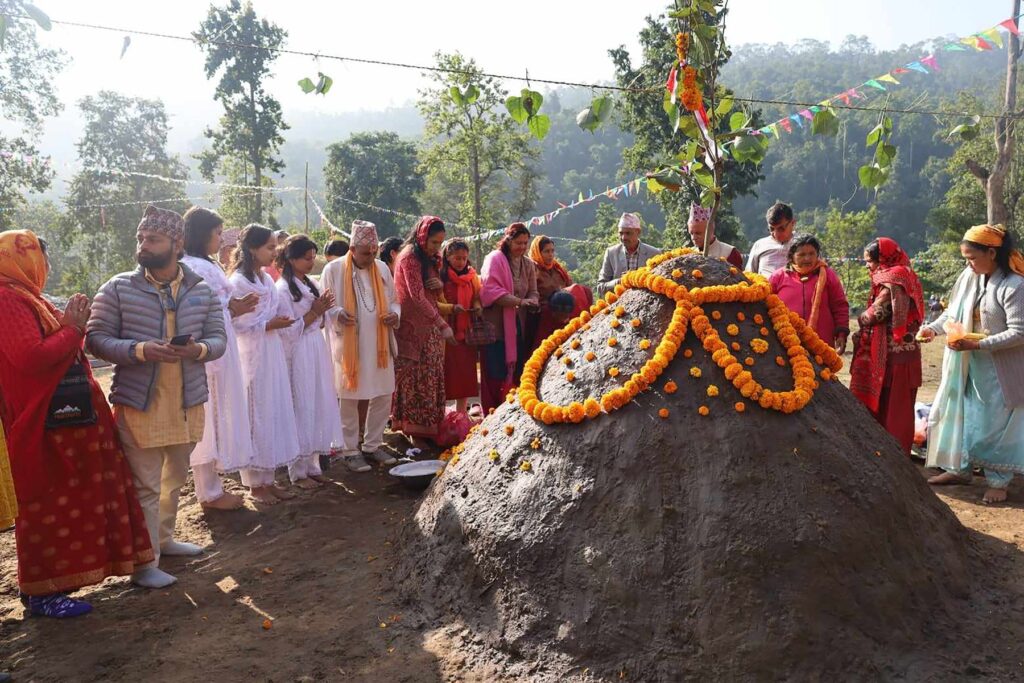
Govardhan Puja (Ox Worship)
Govardhan Puja is celebrated by worshiping oxen, which are essential for agriculture. People honor the oxen by placing garlands and red tika on them and feeding them special meals to acknowledge their hard work and contribution to farming.
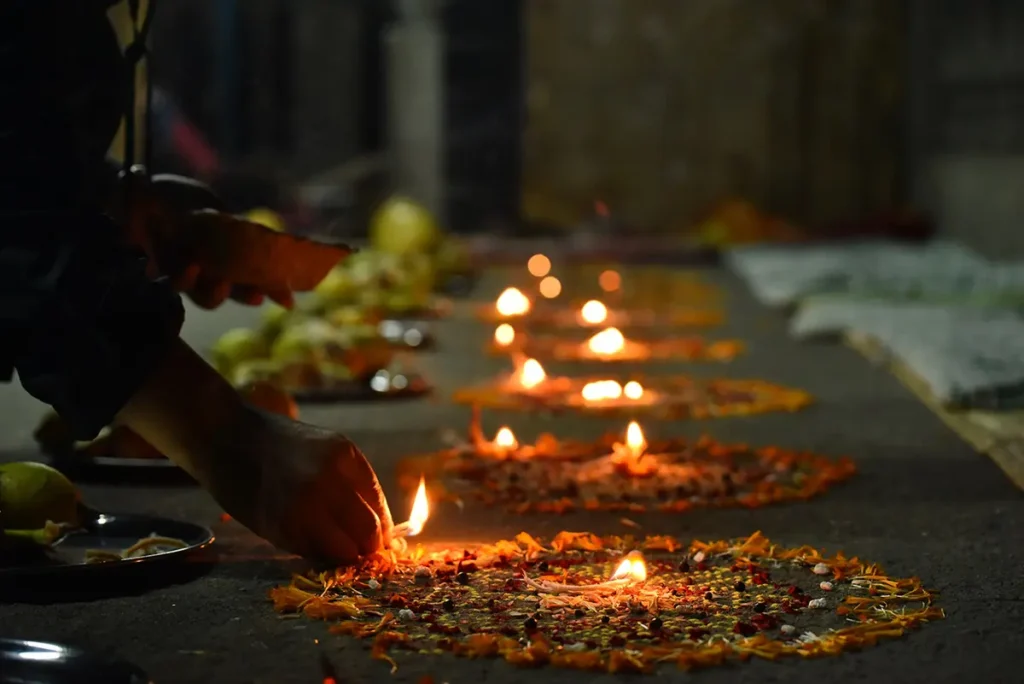
Mha Puja (Self-Worship)
Among the Newar community, Mha Puja, or “self-worship,” is performed as a way to purify and bless oneself. This ritual is unique to the Newars of the Kathmandu Valley and is associated with their New Year celebration, known as Nepal Sambat. During Mha Puja, each family member sits before a mandala (a decorative and symbolic design) while performing rituals that signify self-respect, spiritual cleansing, and preparation for the New Year. Newars take this day to honor their bodies and minds, with blessings for health, prosperity, and longevity.
Day 5: Bhai Tika (Brother-Sister Day)
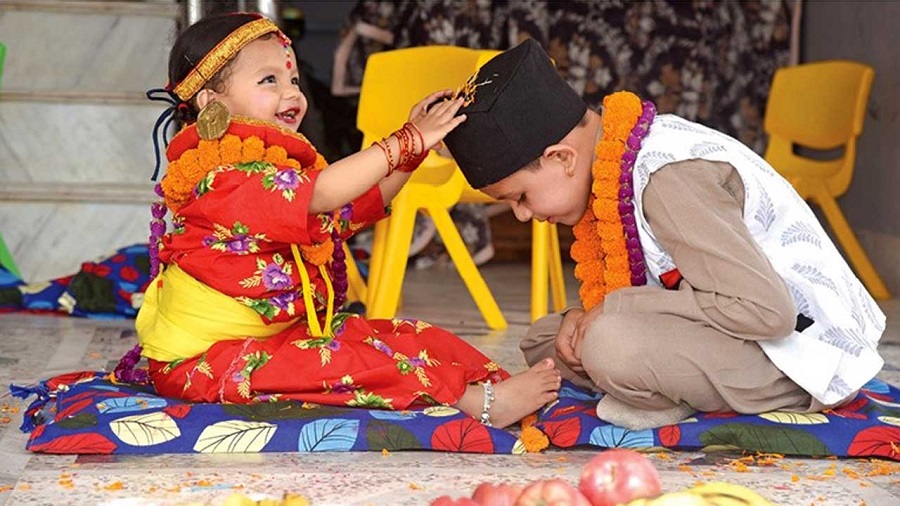
The final day of Tihar, Bhai Tika, celebrates the bond between brothers and sisters. Sisters apply tika, a multicolored mark of blessing, on their brothers’ foreheads as a symbol of protection from all evils. This tika usually includes colors such as red, yellow, green, blue, and white, each representing a different aspect of protection and good fortune.
Brothers, in turn, give gifts and blessings to their sisters, promising to safeguard them throughout their lives. The ceremony includes offerings of garlands, fruits, sweets, and traditional dishes, symbolizing the sacred connection between siblings. Bhai Tika is deeply meaningful and heartfelt, with families gathering to celebrate love and loyalty, marking the festival’s close with warmth and joy.
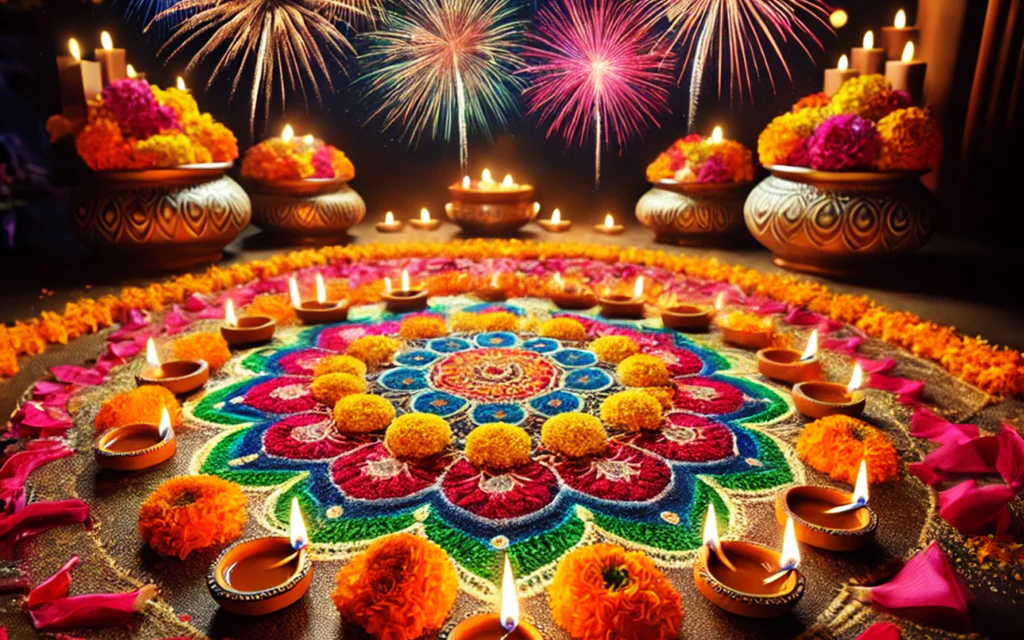
Throughout Tihar, homes, temples, and streets are illuminated with lights and oil lamps, and neighborhoods are filled with the sound of cultural songs and celebrations. Families gather to make sel roti, a special rice-based fried bread cooked in ghee, while children play games and enjoy festive treats.
The festival’s decorations, such as rangoli and intricate mandalas, brighten homes and public spaces, bringing people together in shared rituals and cultural pride. Additionally, Tihar reflects the Nepalese spirit of harmony and respect, as the celebration encompasses all beings, from animals to deities and loved ones.
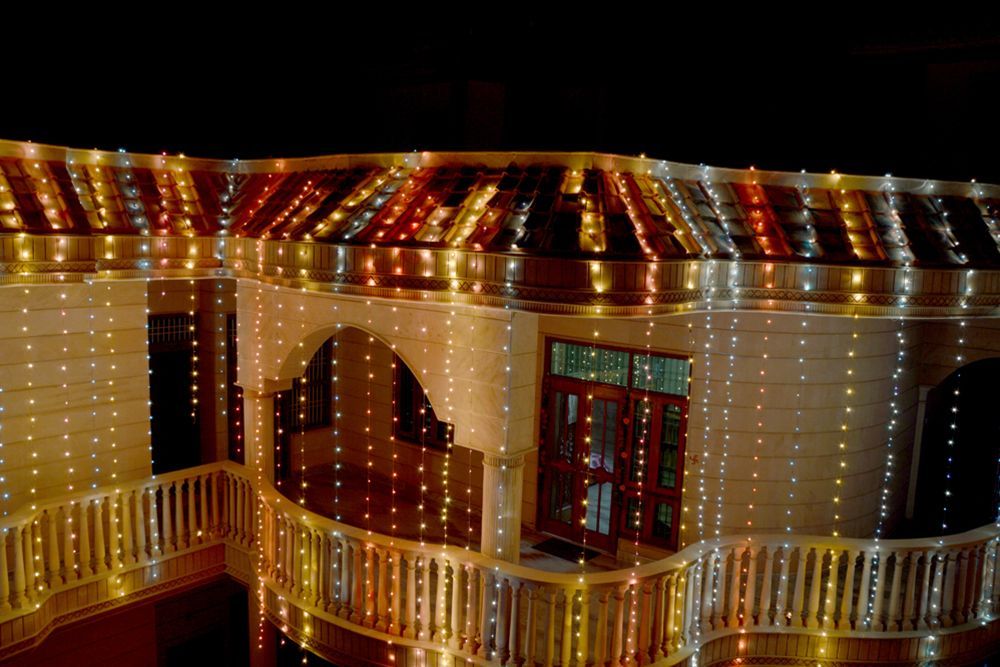
Tihar is much more than a festival; it is a blend of religious devotion, cultural heritage, and social unity that resonates deeply with the Nepalese people. Each day of Tihar brings unique customs that reinforce values such as respect for nature, love for family, and spiritual gratitude.
The festival’s lights, rituals, and traditions create a truly magical experience, reminding everyone to cherish the bonds that connect us and the blessings that life offers. Tihar is a time of joy, reverence, and community, as families and friends come together to honor a cherished heritage and celebrate the values of light, love, and prosperity.
Article By: Ranjana Adhikari
